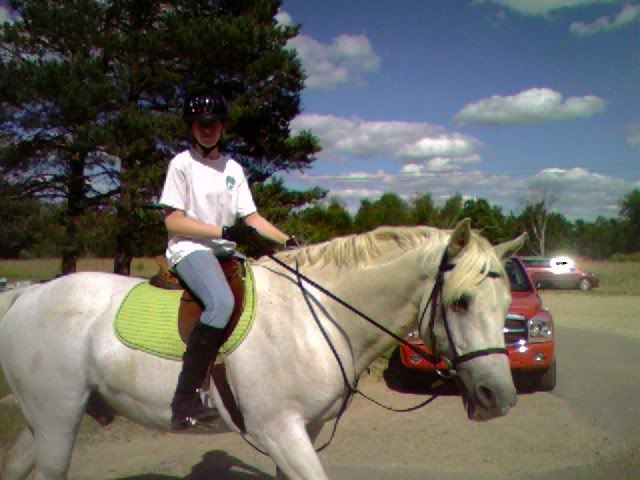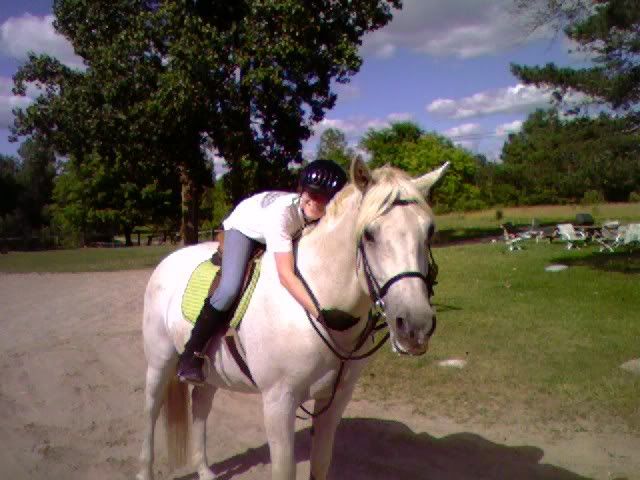So I had to switch to ride on Fridayinstead of tuesday last week. But anyways, Junior was getting his feet done then, so I couldn't ride him. Instead I rode this brat named Casper. He's privately owned. His owner is NOT a good match for him at all. She lets him get away with biting, so now I've got this big welt on my arm from a bite. Plus, she never kicks or smacks him with the crop (even though she really needs to, he's so lazy!) Anyways, I had to ride him. I saddled him up with no problem. Bridled (is that a word?) him. No problem. Then he bit me as I was grabbing a crop before I mounted. He is so inconsistent with the speed of his trot. He was slow, so I gave him a little kick. Nothing. I kicked him a little harder, he sped up a little. So I smacked him lightly, again, almost no response. I was getting annoyed with him, so I smacked him and kicked at the same time lol. he shot forward so fast I almost tumbled off him backwards lmao! Then, when we cantered, things went from bad to...more bad. When his owner, Tammy, rides him, his canter almost has 4 beats instead of 3. They're so uncoordinated. I got him moving faster and smoother, but then he kept dropping his head and I was getting thrown all off balance. I was so glad when we were walking again. It was even worse cantering the other direction! He bucked, I landed on his neck, he bucked again, I almost went flying off. Somehow I managed to get myself back in the saddle. And then he wouldn't stop. I was so scared! Haha I lost a stirrup, and while we were trotting around, I was trying to get it back, but for some reason I was still posting lmao. And his jump....SO wierd. He ALWAYS chips in to get really close to the jump, no matter what I do, and he barely lifts his front end but like pushes really hard with his hind end. The first few jumps I landed like on his neck before I was used to it. Yeah I was SOO glad when that lesson was over. But for some reason, I really want to ride him again. idk why. But i do. lol.
any help on how to get him to stopthis...if I ride him again?
Casper is very cute though :] I got a few pictures after the lesson, when I was walking him around outside:
oh! and for those who still remember me talking about Barney...his owner switched him to a double bridle. he doesn't run away anymore. yeah his owner is still at college though...








 Reply With Quote
Reply With Quote



 The bouncier a canter, the more you feel the rhythm, and it will show you how to sit with the horse. I think the problem with his canter could lie in his trot. A bad trot makes a bad canter. Once you have achieved more collection and impulsion in the trot, you'll find the canter transition much easier, and he should fall into a better rhythm with his hindquarters powering him, rather than his forelegs dragging him.
The bouncier a canter, the more you feel the rhythm, and it will show you how to sit with the horse. I think the problem with his canter could lie in his trot. A bad trot makes a bad canter. Once you have achieved more collection and impulsion in the trot, you'll find the canter transition much easier, and he should fall into a better rhythm with his hindquarters powering him, rather than his forelegs dragging him.



 Kalei
Kalei


Bookmarks